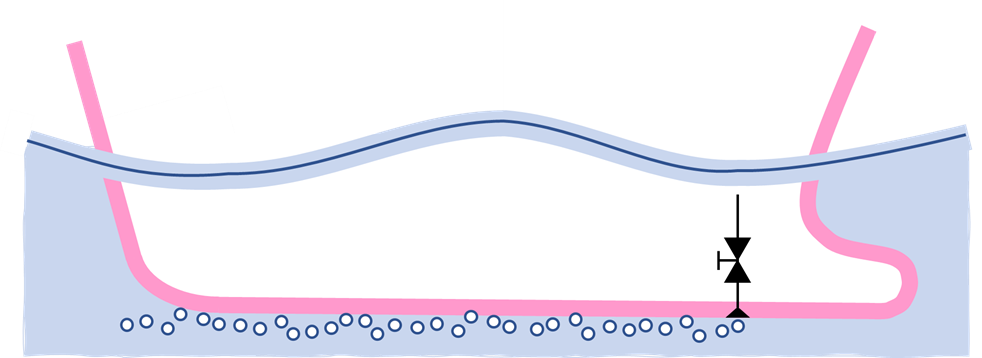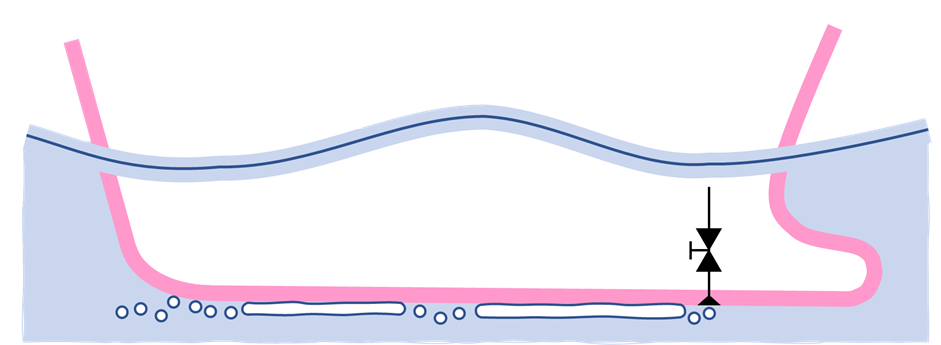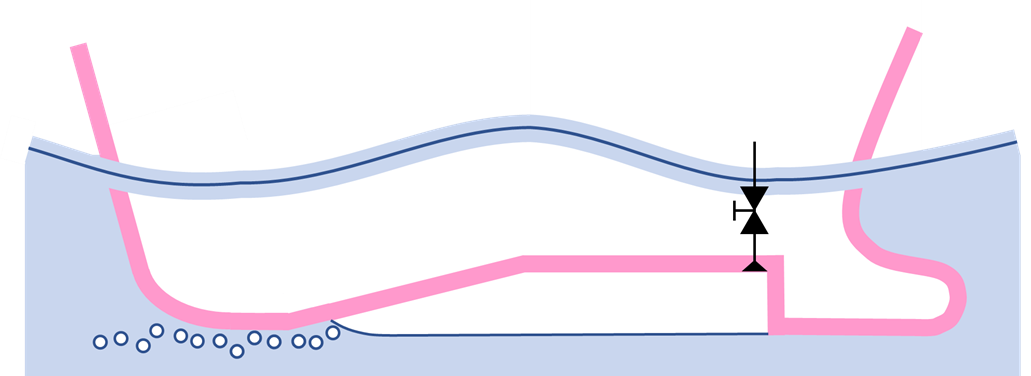If someone told you their latest invention was a bubble blowing device, you might think that they were pulling your leg. However, this is serious business for a subset of the marine engineering sector focussed on putting a plug in the greenhouse gas emissions associated with the global shipping industry.
Shipping is estimated to account for 3% of annual global greenhouse gas emissions, and without changing tack this could reach 10 – 13% in the coming decades. However, the EU are legislating under the European Green Deal to reduce EU-wide greenhouse gas emissions by 55% by 2030 compared to 1990 levels, and emissions from large vessels will be included in the EU’s emissions trading system, regardless of the flag the vessel is flying.
The challenge is that these enormous vessels consume a lot of energy as they ply their way across the open oceans due to the drag forces acting on them. When it comes to reducing the drag acting on ships, there are three components that can be tackled:
- form drag – the drag resulting from the ship’s shape under the water,
- wave-making drag – quite literally the force to push the water in front of the ship out of the way, and
- skin drag – the force arising due to the interaction between the hull’s surface and the fluid in the boundary layer (the thin layer of fluid adjacent a moving surface that interacts with the surface).
This is where the bubbles come in.
Friction is a drag
Due to the relatively low speeds of cargo ships, skin drag can approach 85% of the total drag acting on these vessels.
The solution is a seemingly simple one, air lubrication. By injecting air out of the hull, it is possible to reduce the volume of water in the boundary layer that is interacting with the hull and generating drag.
Done right, injecting air into the boundary layer in this manner can result in sizeable reductions in the skin drag ships experience, and in turn a reduction in the power required to propel the ships forward – potentially over 20%, even accounting for the energy requirements of pumping the air.
When it comes to getting the air in the right place, there are a few different options being explored.
Forever Blowing Bubbles
The simplest implementation of air lubrication, microbubble drag reduction (MBDR) relies on injecting large quantities of bubbles into the water from the surface of the hull.
The exact mechanism by which the bubbles reduce drag continues to be debated. However, this uncertainty has not held back innovation, with Silverstream Technologies and Mitsubishi Heavy Industries continuing to improve the efficiency of their patented systems; Silverstream’s most recent patent application is directed to maintaining suitable airflow to each of their system’s bubble generating units distributed around the hull even when the boat is rolling and pitching.

One of the main attractions of MBDR (and ALDR discussed below) is the relative ease with which the technology can be retrofitted to existing vessels, which is important given the 25 – 30 year lifetime expected of cargo ships.
Air Layer Drag Reduction (ALDR) – the magic carpet solution
If you keep increasing the rate at which bubbles are injected into the boundary layer, eventually the density of bubbles is going to become so high that they start to coalesce into a continuous layer of air separating the solid hull from the water, a carpet of bubbles if you like.

The challenge here is maintaining that continuous layer of air. Especially when the boundary layer is turbulent, as will be the case for real-world scenarios, the volume of air that needs to be injected to prevent this layer breaking up is a lot larger than in the MDBR regime. The greater the volume of air being pumped into the water, the greater the power consumption associated with the system, which eats away at the net power savings from the drag reduction.
However, studies also suggest that ALDR maintains the drag reduction over a greater distance downstream of the injection point than MBDR and leads to greater drag reductions, potentially leading to greater net energy savings despite the larger volume of gas needing to be injected.
A good kind of cavitation
Cavitation is normally bad news when it comes to boats. However, not all cavities are as bad as those your propeller can generate.

A third approach to air lubrication involves a more radical manipulation of the hull’s form – the creation of a recess on the bottom of the hull that is able to trap an air cavity thanks to a sharp backwards-facing step at the leading edge of the recess. This thick air cavity can dramatically reduce the wetted area of the hull and provide a large, and stable, reduction in skin drag.
Air injection is still provided to the recess in order to account for the air that becomes entrained in the water at the surface of the cavity, but with proper recess design, the volume of air needing to be injected to maintain the cavity should be less than that required for ALDR. Combining the reduced injection requirements with the drag reduction over the area of the cavity, there is the potential for cavity drag reduction to deliver substantially greater power savings than its siblings.
However, one of the challenges with cavity drag reduction in comparison to MBDR and ALDR is that it is much more challenging to retrofit to existing vessels. Given the ambitious targets the EU, in addition to many countries around the world, are setting for emissions reductions and that the average lifetime of merchant vessels is in the range of 20 – 30 years, cavity drag reduction deployment may lag behind that of MBDR and ALDR for some time to come.
All Hands on Deck
As with many industrial sectors, decarbonisation is not going to be easy for the maritime sector. Nevertheless, it is essential.
Thankfully, air lubrication is just one of a number of technologies being developed to clean up shipping. As we’ve previously covered, the use of electrical power in the shipping industry is growing, and sail power is even staging a resurrection.
What’s more, the efficiency gains available with air lubrication technology are independent of the propulsion methods and power source of the vessel, meaning that the technology will remain relevant even as developments in sustainable power systems propel shipping towards its emissions targets.
Rob is a patent attorney in our engineering and ICT team. Rob has an MEng degree in Chemical Engineering from the University of Cambridge. His masters research project focussed on three-dimensional analysis of particle-size segregation within granular avalanches using magnetic resonance imaging. During his undergraduate studies, Rob spent time working for Proctor & Gamble within their Baby-Care R&D Group.
Email: rob.walker@mewburn.com

-1.png)
